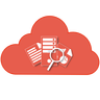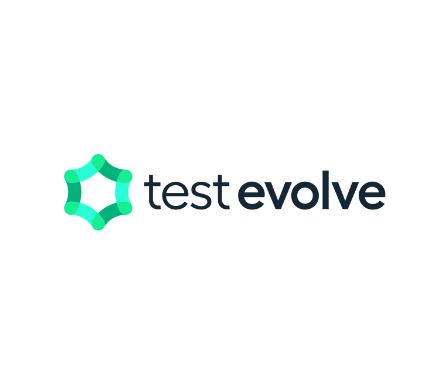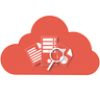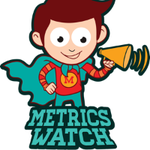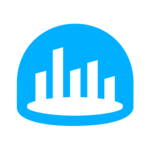What Are The Recent Trends In Reporting Tools?
The reporting tools market has expanded significantly in recent years, as businesses rely more on data and analytics to make educated decisions. As a result, the demand for efficient, user-friendly, and adaptable reporting tools has increased, resulting in the introduction of various trends in this category.
Let's explore, we'll look at the latest developments in reporting tools and how they might help your organization.
1. Advanced Analytics Skills: As data becomes more readily available, businesses need reporting systems that not only give basic reporting but also advanced analytics skills. These technologies use techniques such as data mining and predictive analytics to extract insights and patterns from data, allowing businesses to make better informed decisions. Such applications frequently include machine learning techniques, making it easier for non-technical users to gain significant insights.
2. Integration With Big Data Technologies: Big data technologies like Hadoop and Spark have become critical for managing massive amounts of data. As a result, reporting tools are increasingly merging with these technologies to provide improved performance and scalability. This connectivity also enables firms to examine and report on data from numerous sources, providing a more complete picture of their data.
3. Mobile And Cloud Compatibility: As remote work and mobile device use have grown in popularity, there has been a surge in demand for reporting tools that are mobile and cloud compatible. This enables organizations to access and share reports on the go, enhancing cooperation and decision-making processes. Furthermore, cloud-based reporting systems have a cheaper total cost of ownership and greater flexibility in terms of data storage and access.
4. Visualization Techniques: Visualizations are an effective technique to show complex data in an intelligible fashion. As a result, reporting solutions are now including numerous visualization approaches, such as graphs, charts, and maps, to help consumers understand data more simply. Advanced tools also include interactive dashboards, which enable users to filter and alter data to acquire a better understanding.
5. Automation and Collaboration: Automation has emerged as a prominent trend in reporting systems, saving time while also lowering the danger of human error. Many applications now include options for automating report generation and distribution, freeing up users' time to focus on analysis and decision making. Furthermore, collaboration tools like real-time sharing and commenting enable teams to collaborate on reports, encouraging data-driven decision-making throughout the enterprise.
Benefits Of Using Reporting Tools
Reporting tools provide several benefits to firms of all sizes and industries. These tools are intended to assist you in gathering, organizing, and analyzing data so that you may make educated decisions and track critical performance measures.
Let's explore, we will discuss the top advantages of adopting reporting tools and how they might assist your firm.
1. Improved Data Visualization: One of the most significant advantages of using reporting tools is the ability to convert complex data into visual reports. These reports can take the form of charts, graphs, or dashboards, making it easier to identify trends, patterns, and outliers in your data. This visual depiction provides for faster and more effective decision making by rapidly identifying areas that require attention or improvement.
2. Time And Cost Savings: Manually gathering data and preparing reports can be laborious and time-consuming. However, reporting systems simplify the process, saving you valuable time and resources. These tools allow you to prepare reports in minutes rather than hours or even days. Furthermore, reporting tools can help cut the expense of hiring a specialist data analyst by handling data analysis and visualization on their own.
3. Real-Time Access To Data: Reporting tools enable you to monitor and track your important company indicators in real time. This real-time data can help you make timely and data-driven decisions because you have the most up-to-date information at your disposal. This is especially beneficial for firms that must react fast to shifting market conditions or make on-the-spot choices.
4. Customization & Personalization: Reporting tools provide extensive customization and personalization options, allowing you to tailor your reports to your individual requirements and tastes. You get to choose which data to include, how to visualize it, and how to deliver it to various stakeholders. This degree of adaptability ensures that you gain the most relevant and meaningful insights from your data.
5. Data Integration & Centralization: Most firms keep data across many systems and platforms, making it difficult to have a comprehensive understanding of their operations. Reporting tools can link with a variety of data sources, including databases, CRMs, and marketing platforms, to consolidate all of your data in one location. This not only saves time, but also assures that data is accurate and consistent throughout all reports.
6. Performance Tracking And Measurement: Reporting tools enable you to track and measure key performance measures, making it easy to evaluate your company's growth. You can create targets and goals, and then use these tools to track your progress toward those aims. This enables you to identify areas for improvement and make data-driven decisions that promote growth and success.
Important Factors To Consider While Purchasing Reporting Tools?
When selecting reporting tools, it is critical to evaluate a few important elements to ensure that you are investing in the best solution for your company's needs.
Here are some crucial considerations to consider while making your decision:
1. Budget: Before you begin researching and comparing reporting systems, you must establish a budget. Reporting tools can cost anywhere from free to thousands of dollars, so setting a budget can help you narrow down your alternatives and avoid overspending.
2. Features And Functionality: Different reporting tools have varying features and functionalities. It is critical to assess your business requirements and select a solution that provides the functionalities you desire. This can include data visualization, personalized dashboards, automatic reporting, and other features.
3. Compatibility And Integration: Make sure that the reporting tool you chose is compatible with your existing systems and can connect effortlessly. This will save you time and effort in the long run while also avoiding technological complications.
4. User-Friendly Interface: You don't want a reporting tool that is unnecessarily complex and difficult to use. Look for a tool with a simple interface that all employees, including those with no technological background, can use.
5. Customization Options: Each organization has distinct reporting requirements, so a one-size-fits-all solution may not be appropriate for you. Look for a reporting solution with customization possibilities, so you may personalize reports to your individual needs.
6. Data Protection: Data is critical to any business, so choose a reporting solution that assures your data's protection and privacy. Look for solutions that provide encryption and other security features to safeguard sensitive data.
7. Customer Support: Technical issues can occur at any time, so having dependable customer service is critical. Look for a reporting platform that provides 24-hour help and has an excellent reputation for addressing difficulties quickly.
By taking these criteria into account, you can make an informed selection and select a reporting solution that fulfills your business requirements and enables you to make data-driven decisions. Remember to conduct extensive research and evaluate many possibilities before making a final decision to guarantee you are receiving the greatest value.
What Are The Key Features To Look For In Reporting Tools?
When selecting a reporting tool, you should examine many critical elements to ensure that you are making an informed decision. These characteristics have an impact on both the tool's general functionality and its ability to suit your unique reporting requirements.
To assist you navigate the many options available, we've developed a list of key features to look for in a reporting tool.
1. Customizable Dashboard: A customizable dashboard enables you to tailor the appearance and arrangement of your reports to your preferences. This not only saves time, but also makes it easier to obtain and evaluate the information that is most important to you.
2. Drag-And-Drop Interface: Look for a reporting tool that has a drag-and-drop interface, allowing you to create reports without any technical expertise or coding abilities. This tool allows you to effortlessly add and arrange features in your reports, providing you complete control over their design and presentation.
3. Data Integration: An effective reporting tool should be able to work with a variety of data sources and formats. This allows you to gather data from other systems, like as CRM, accounting software, or spreadsheets, to generate comprehensive reports containing all of the relevant information.
4. Real-Time Reporting: The ability to generate real-time information is critical for monitoring your company's performance. Look for a reporting solution that can deliver real-time updates, allowing you to make informed decisions using the most recent data.
5. Interactive Visualizations: Visual aids such as charts, graphs, and maps can significantly increase the impact of your reports, making them more engaging and understandable. Look for a reporting solution that provides a variety of interactive visualization options to effectively present your data.
6. Collaboration Tools: If you work in a team, you should choose a reporting tool that includes collaboration features. This enables numerous people to access and edit the same report at the same time, encouraging collaboration and increasing productivity.
7. Scheduled Reports: A reporting solution that allows you to schedule reports will save you time and ensure that you obtain important business insights on a regular basis. This functionality also allows you to automatically distribute reports with stakeholders, keeping them updated without requiring any extra work.
8. Mobile-Friendly: In today's mobile-first environment, having a reporting tool that works on mobile devices is vital. This allows you to access and evaluate your reports on the road, increasing your flexibility and productivity.
Why Do Businesses Need Reporting Tools?
Businesses require reporting tools to track, analyze, and present data in an understandable manner. These tools are crucial for businesses to make educated decisions, increase performance, and achieve their objectives. To begin, reporting tools provide data to firms, allowing them to better evaluate their present performance and identify areas for development.
By collecting key performance indicators (KPIs), businesses can spot trends and patterns in their data, allowing them to make data-driven decisions to improve their processes and strategies. Second, reporting tools enable businesses to track progress toward their goals and objectives. Businesses that put up customisable reports may track their progress in real time and make required adjustments to stay on track.
This not only keeps people accountable, but also allows them to make proactive decisions to meet their goals. Furthermore, reporting tools provide the opportunity to visualize data in a variety of ways, including charts, graphs, and dashboards. This allows firms to obtain a better knowledge of their data and effectively communicate it to stakeholders.
Visual representations also make it easier to recognize trends and outliers, allowing organizations to pinpoint areas that require attention. Furthermore, reporting solutions offer firms a single repository for all of their data, minimizing the need for manual data entry and lowering the possibility of errors. This saves businesses time and resources while also ensuring that their data is accurate and up to date.
Furthermore, reporting tools provide advanced features such as data filtering, drill-down capabilities, and customisable analytics, enabling firms to delve deeper into their data and gain useful insights. These insights can then be used to discover areas for expansion and make data-driven decisions that give the company a competitive advantage.
In a word, businesses require reporting tools to analyze performance, monitor progress, visualize data, centralize data, and derive valuable insights. These technologies help firms optimize their operations, make educated decisions, and achieve their goals more effectively. Businesses can use reporting technologies to transform raw data into actionable insights, resulting in success.
Which Industries Can Benefit The Most From Reporting Tools?
Reporting tools are vital for businesses across industries since they provide valuable insights and data analytics to help with decision-making and overall performance. Certain industries, however, can benefit more from reporting systems due to their unique requirements and constraints.
Let's explore, we'll talk about which industries can gain the most from reporting tools and how.
1. Marketing And Advertising: The marketing and advertising industries rely significantly on statistics to assess campaign success and make strategic decisions. Reporting tools provide comprehensive options for tracking and analyzing critical metrics including click-through rates, conversion rates, and ROI. This enables businesses in this area to maximize their marketing efforts and achieve better outcomes.
2. Finance: Financial institutions process large amounts of data on a regular basis, making it difficult to extract useful insights manually. Reporting tools enable quick access to financial data and include real-time dashboards, customisable reports, and predictive analytics. This enables finance professionals to make more educated judgments, recognize patterns, and forecast future trends.
3. Healthcare: Reporting tools are essential for assessing patient data, monitoring performance, and tracking healthcare outcomes. These solutions provide sophisticated reporting capabilities, such as risk assessment, quality metrics, and patient satisfaction scores. This assists healthcare institutions in identifying areas for improvement and enhancing patient care.
4. Retail: Retail enterprises confront fierce competition and ever-changing consumer trends. Reporting tools allow them to monitor sales performance, inventory levels, and consumer behavior. This improves inventory management, forecasting demand, and strategic planning for promotions and pricing.
5. Education: To improve student results, the education industry is increasingly implementing data-driven techniques. Reporting tools offer instructors vital information into student performance, attendance, and engagement. This allows them to identify problematic kids, monitor progress, and tailor learning approaches to individual requirements.
6. Manufacturing: Reporting tools assist manufacturers in optimizing production processes, lowering costs, and maintaining quality standards. These solutions enable real-time data analysis, inventory management, and supply chain insight. This allows manufacturers to streamline processes, make data-driven decisions, and maintain competitiveness.
Conclusion
To summarize, investing in a trustworthy reporting platform is critical for any firm trying to make data-driven decisions and stay ahead of the competition. As previously noted, there are several things to consider when selecting the best reporting tool for your firm, including data integration, visualization capabilities, and cost.
Furthermore, before making a purchase, analyze your specific business needs and priorities to ensure that you select a solution that corresponds with your goals and objectives. We hope this buyer's guide has provided you with useful information and helped you navigate the congested reporting tool market. Remember to properly investigate and test several choices before making a selection to ensure that you are making an informed decision that will benefit your organization in the long term.


